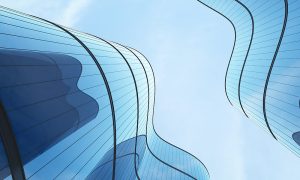Site Visit: Louvre Abu Dhabi
Big Project ME visits the site of the Louvre Abu Dhabi museum on Saadiyat Island

RELATED ARTICLES: Giant dome structure of Louvre Abu Dhabi complete | Construction of first gallery at the Louvre Abu Dhabi completed | DSI signs $113 million MEP deal for Abu Dhabi Louvre Museum
Abu Dhabi is set for a cultural boost at the end of 2015, when the Louvre Abu Dhabi, the flagship project of the Tourism Development & Investment Company (TDIC), is due to complete.
The government-owned master developer recently held an event to mark a key milestone in the ongoing construction work: the completion of the iconic dome structure on top of the museum.
Big Project ME visited the site on a typically hot and dusty day to see the progress on Abu Dhabi’s answer to the world-famous Paris museum.
The dome
Over 5,000 workers and staff are working onsite, with the Louvre Abu Dhabi project already having clocked up a staggering 19 million man hours. The most obvious product of this labour is the giant dome structure rising above the sandy site, composed of criss-crossing steel elements and visible from a great distance.
Work on the 7,000-tonne dome started last December, with the structure’s backbone formed of 85 super-sized elements.
From a distance, one only sees the dome’s outer steel surface, which seems to hover serenely above the UAE capital’s Saadiyat Island.
Closer up, however, it seems like a different world. Construction is in full swing, as cranes loom overhead and scores of labourers and site managers move around the site.
The next step in the construction work, scheduled for November, will be a mammoth undertaking. The dome will be raised to remove 120 temporary supporting towers, so that the structure can rest on four permanent piers.
Four hydraulic jacks will be used to lift the dome 30 to 60 cm off its current supports, says Amer Kharbush, project manager at Turner Construction. The entire process is expected to take up to a week.
“Once everything’s loose from the temporary towers, we cut the tops down and we set it back on the permanent structures. So when you’re looking [from] the outside you’ll think that the dome is floating,” Kharbush told Big Project ME.
“The process, as easy as it sounds, is not. That’s going to be one of the most stressful times for us on the site,” he says.
The strikingly modern-looking steel dome seems anything but natural. But its intricate design and geometric openings are said to be inspired by the interlaced palm leaves traditionally used as roofing material in old Arab buildings.
This unique geometry will help evoke a so-called ‘rain of light’ effect beneath the structure. This will require the installation of cladding pieces engineered to form about 8,000 star-shaped elements between 3.5 and 13.5 metres wide.
Security features
While the dome and other architectural elements of the Louvre Abu Dhabi are certainly of interest, the main attraction of any museum is what it houses.
The Abu Dhabi museum announced this month that it will receive about 300 artworks on loan from major institutions in France, including paintings by Leonardo da Vinci, Manet, and Monet.
So how does the Louvre Abu Dhabi plan to safeguard such valuable artworks?
An entire underground “city” has been erected below the museum, Kharbush says, along with an access tunnel for security purposes that link with the other museums.
The security tunnel is the only link with the other two museums being constructed on Saadiyat Island, the Guggenheim Abu Dhabi and the Zayed National Museum.
Various art conservation areas, restoration rooms and kitchens will also be housed underground, Kharbush tells Big Project ME. “It’s a city underneath,” he says.
Some of the paintings will be shipped to the UAE and others flown in, he adds, saying they will be brought into the museum through the security tunnel.
An additional security feature is the planned set of breakwaters on the island to protect the building from waves, as well as prevent unauthorised entry via boat, Kharbush says. The breakwaters consist of 900 concrete blocks weighing up to 50 tonnes each, he added.
Hollywood-inspired heists are not the only threat to paintings, however.
“The worst enemies of artworks or artefacts is water and light. Forget the fire, it’s water and light that destroys them,” Kharbush says.
Temperature will be carefully controlled in the museum in order to adhere to the “extremely strict” guidelines imposed by the Louvre in France for the gallery spaces, says Melisa Maktalan, Deputy Director of Development-Museums at the TDIC.
This will allow the temperature to be adjusted by just 0.05 of a degree, Maktalan said. “It’s one of the [most] perfectly designed museums from that perspective.” The paintings will also be protected from light by automated blinds.
What lies ahead
MEP works on the project have already begun, Kharbush says, while marine works are another major activity to be undertaken.
“From now until December next year there’s a lot of work to happen from a construction and from a fit-out [perspective],” he says.
As of now, 55 percent of the overall work on the museum is complete.
“Right now we’re on plan, we’re on target,” Kharbush says. “I think we have a good team of people around us. The designers, the architects, the engineers, the project management team, the construction team. Everyone works together in tandem.”




















